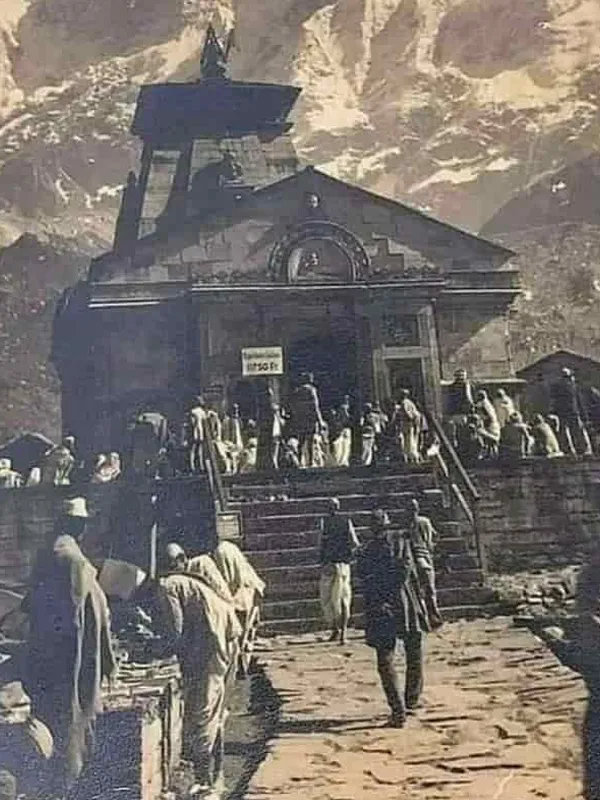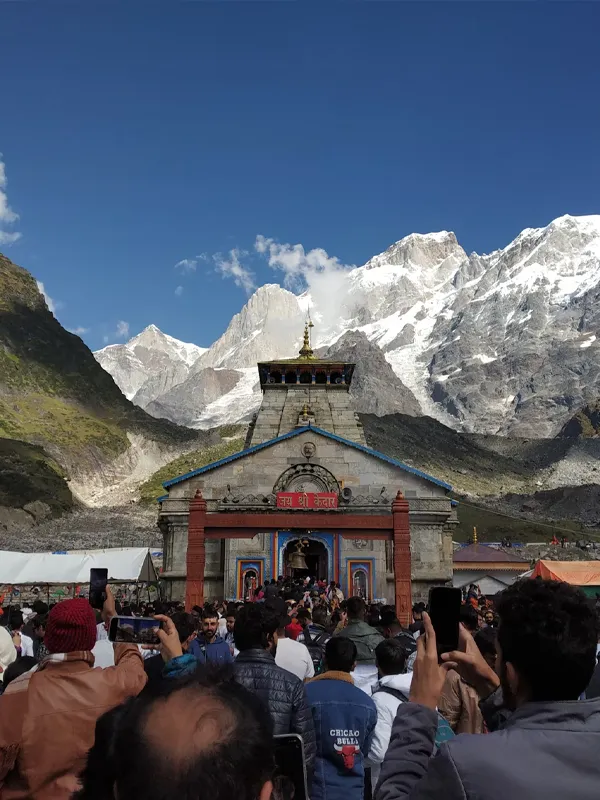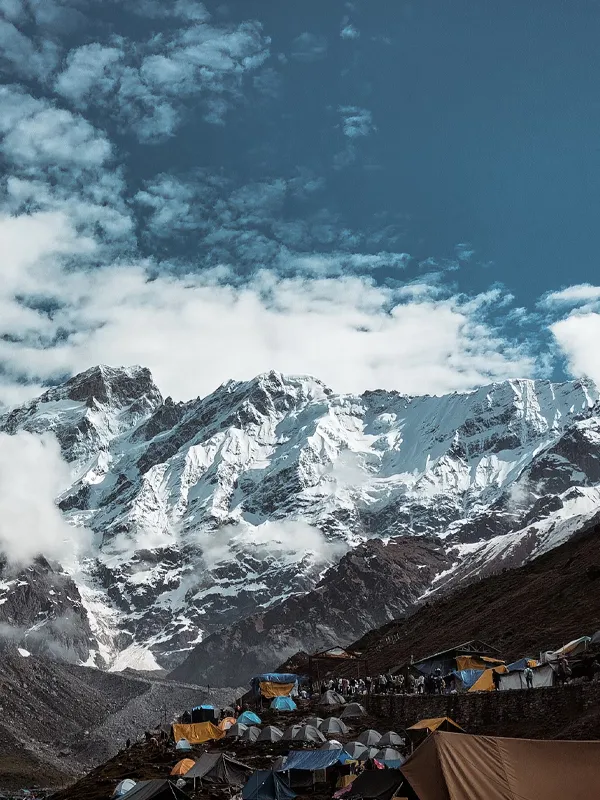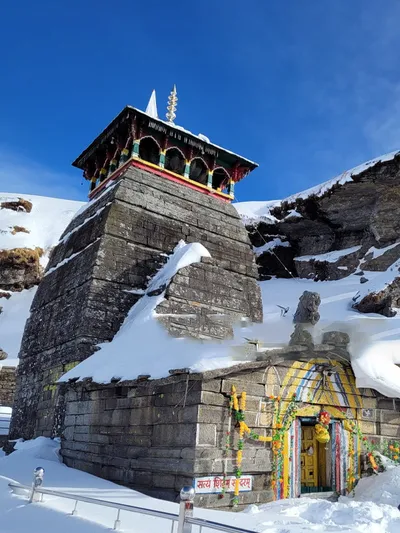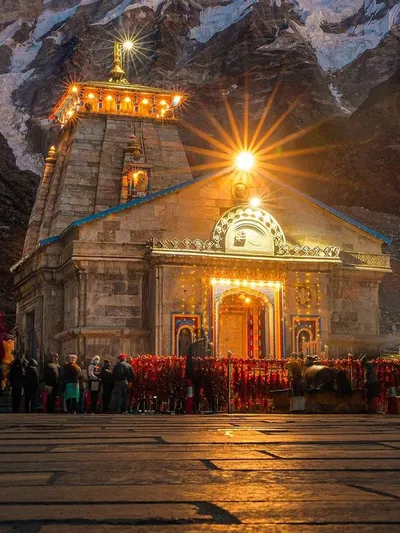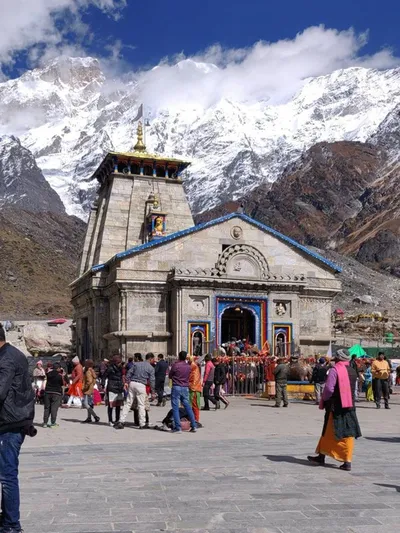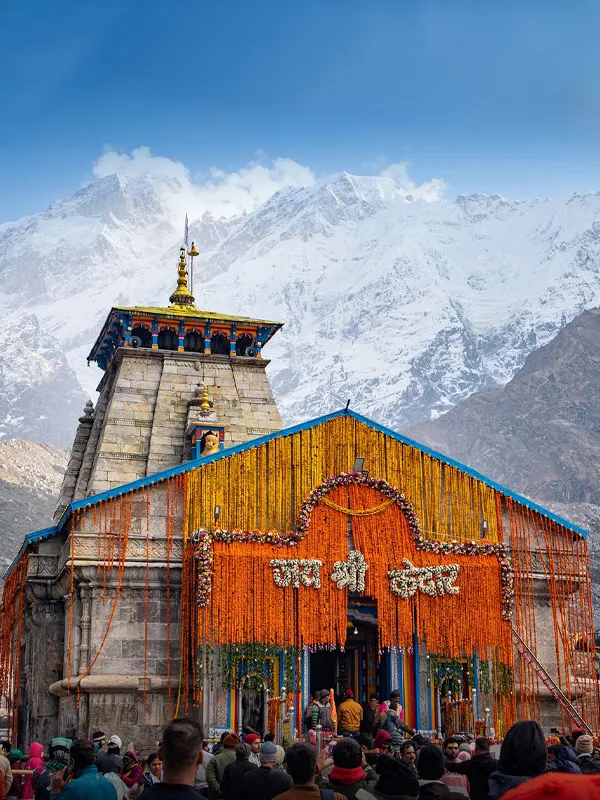
Kedarnath Temple History

Perched on an elevation of 3,583 metres above sea level and placed on the lap of the Garhwal Himalayan ranges, a visit to Kedarnath will make you wonder how our ancestors made their way to this holy Dham without any such help or support. The history of Kedarnath dham dates back to the ancient ages to the time of peak Hindu religion. People make their way to this dham on their holy journey to attain moksha.
The entire valley of Kedar is completely drenched in a feeling of historical relevance and deep unmatched spirituality owing to its magnificent and colorful historical and mythological account which are:
Hindu Mythology of Kedarnath
One of the most important stories about the creation of kedarnath dham tells a story about how the Pandava brothers had made their way here in search of Shivji. The story starts from the time when the Pandava brothers had won the Mahabharat war by killing all their kin and committed a horrible sin. According to the advice from their chief saint and philosopher the Pandava siblings were advised on going to the Himalayas on a lookout for the lord. They made this pilgrimage via Haridwar and searching for the lord they made their way to Guptkashi where the lord had himself in the form of a bull however, Bheem recognized him and at that very moment this bull started to sink inside. Bheem then went ahead and grabbed the bull by its tail and in this tug of war the face of this bull emerged in Nepal with its rear end in Kedar. When this happened a jyotirlinga was established and the Pandavas were graced by the presence of the lord himself. The Pandavas then asked for forgiveness and they were also granted the same. The lord told them that he would now reside inside the triangular shaped lingam. Ever since then the devotees make their way to the temple in search of piety.
Historical Account
Kedarnath’a historical account can be dated back to the 8th century to the great sage, saint and philosopher Adi Shankaracharya. He is known from travelling all the way from his birthplace in Kerala to Kedarnath and throughout the way he established a number of mutths, temples and pilgrimages. He established the chota char dham yatra in devbhoomi Uttarakhand with an aim of reviving the feeling of Hinduism among the general Hindu population. He is believed to have spent a chunk of his lifetime in Kedarnath dham and he also took his last breathe here. In order to commemorate his feat of brilliance and excellence in establishing some of the most popular pilgrimage circuits, temples and shrines which is highly revered even to the present day a sacred shrine dedicated to Adi Shankara has been established right behind the temple. It has become a common tradition to pay homage and respect to the idol of Adi Shankara here. After the devastating flash floods of 2013 this Samadhi is being rebuilt in an underground chamber to keep it safe for future visitation.
Buried in Snow for 400 Years
Although the exact date of construction of the temple of Kedarnath is still a mystery, scientists have always been interesting in digging out secrets which is held in this pristine temple. A research team from Dehradun went ahead to perform some research on the temple walls that would give them clue about the temple’s exact age. The results were shocking! It was discovered that the main temple of Kedarnath was buried inside a thick covering of snow for 400 years. This result was postulated by performing various tests on the outer walls of the temple which shown yellowish lines and upon further research it was shown that these lines were a result of a mini ice age where the entire region of Rudraprayag was completely covered in a massive covering of ice. It is astonishing that even after this ice age period the temple was completely fine and not a single crack was seen. It is clearly understood that whoever is responsible for making this temple structure had kept in mind the harsh weather conditions in this area and had prepared the temple accordingly so that it survives even the harshest of the climates.
Kedarnath Travel Guide
Kedarnath Travel Packages
Hotels in Kedarnath
Chardhamtour.in is not the official website of the Uttarakhand Government. We are a registered travel agency with Uttarakhand Tourism and provide travel-related services. For Chardham Yatra registration, visit registrationandtouristcare.uk.gov.in for pooja booking, visit badrinath-kedarnath.gov.in for Kedarnath helicopter tickets, visit heliyatra.irctc.co.in for Uttarakhand tourism info, visit uttarakhandtourism.gov.in for Karnataka government subsidy, visit sevasindhuservices.karnataka.gov.in.
Chardhamtour.in aims to provide helpful information, latest updates about Chardham Yatra, and services related to tourism in Uttarakhand.
